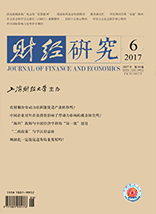In the existing literature, methods for calculating TFP loss caused by labor allocation distortion in the manufacturing industry of China do not eliminate the disturbances of external factors, thereby making the TFP loss significantly overestimated. On the basis of the benchmark model of Hsieh and Klenow(2009), this paper redefines the TFP loss resulting from labor allocation distortion. After eliminating the disturbances of external factors, it concludes that the TFP loss of China's manufacturing industry caused by labor allocation distortion is gradually decreasing from 9.00% in 1998 to 7.39% in 2007. Moreover, since the existing literature lacks related theory of TFP loss decomposition under the model of heterogeneity enterprises, this paper divides enterprises into groups by their characteristics, and establishes the theory of TFP loss decomposition. TFP loss decomposition is helpful to analyze the composition of TFP loss, and provides a reference for relevant policy formulation.The theory of TFP loss decomposition is applicable to databases like not only the manufacturing industry but also agriculture and services industry. Finally, this paper studies the composition of TFP loss resulting from labor allocation distortion from 1998 to 2007 in manufacturing after grouping enterprises by ownership as an example. It comes to the following results:firstly, the TFP loss caused by labor allocation distortion in every industry is the increasing function of the industry's share of labor force, the elasticity of product substitution and the labor-output logarithm ratio variance; secondly, the inexistence of labor allocation distortion between groups in an industry needs to satisfy the condition that the average value of enterprises' labor allocation distortion for every groups within the industry is equal; thirdly, after dividing enterprises into groups by ownership, it obtains that the TFP loss in China's manufacturing industry from 1998 to 2007 caused by labor allocation distortion is mainly composed by in-group loss, and it has changed from the state-owned enterprises and collective enterprises as the main reason to other enterprises as the main reason.
 / Journals / Journal of Finance and Economics
/ Journals / Journal of Finance and EconomicsJournal of Finance and Economics
LiuYuanchun, Editor-in-Chief
ZhengChunrong, Vice Executive Editor-in-Chief
YaoLan BaoXiaohua HuangJun, Vice Editor-in-Chief
Labor Efficiency Loss in Chinese Manufacturing and Its Decomposition: Theory and Evidence
Journal of Finance and Economics Vol. 43, Issue 06, pp. 80 - 92 (2017) DOI:10.16538/j.cnki.jfe.2017.06.007
Abstract
References
Abstract
Cite this article
Yang Pu. Labor Efficiency Loss in Chinese Manufacturing and Its Decomposition: Theory and Evidence[J]. Journal of Finance and Economics, 2017, 43(6): 80–92.
Export Citations as:
For




 7268
7268  5566
5566

